Egypt has a predominantly desert climate, with hot summers and mild winters. Particularly suitable for lovers of the heat, visiting the country will be pleasant even for the most sensitive to high temperatures if a guide is consulted before planning trips to Egypt to choose the best period and take the necessary precautions.
A great variety of natural environments characterizes Egypt. It is bathed to the North by the Mediterranean Sea and to the East by the Red Sea; the hinterland and the South are embraced by the Sahara desert, while a mountainous area crosses the Sinai Peninsula over 2000 meters high. In the common imagination, Egypt is associated with the desert of the Pyramids of Giza and the golden beaches of Sharm El Sheikh, but be careful before packing only bikinis and sundresses; read this article in which we will give you all the necessary information.
Egypt’s climate is primarily arid and desert, with little rain. It has an extensive temperature range and no spring or fall, with a noticeable shift from winter to summer and vice versa.
To enjoy a memorable trip in Egypt, check out our Egypt Excursions with our certified Egyptologist and Egypt travel guide.
Best months to visit Egypt
Northern Egypt (Cairo, Alexandria)

Northern Egypt overlooks the Mediterranean Sea, and the climate is mild and very humid, which also contributes to the presence of the river Nile. In particular, Cairo’s climate is subtropical, with mild winters and hot summers. In the coastal area of the North, e.g., Alexandria, winters are a bit humid and sometimes rainy, but temperatures remain completely acceptable throughout the year.
South Central Egypt (Luxor, Aswan)
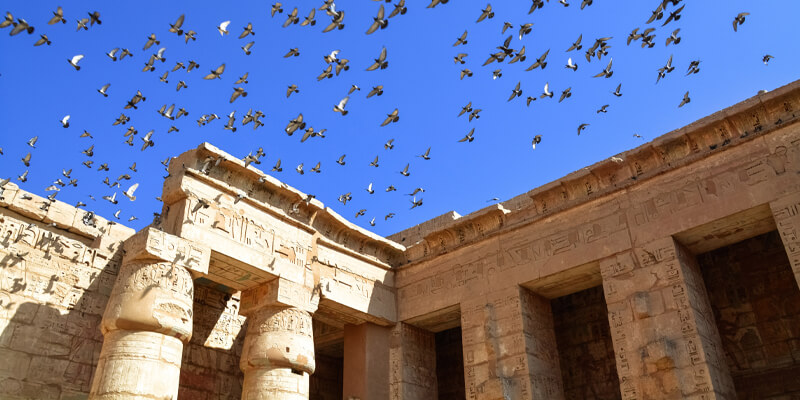
In the South and center of the country stretches the great Sahara desert. The climate is dry and dry; the rains are practically absent, the skies always clear, and the temperatures are high. Winters are mild, with pleasantly warm days around 22 °C and cool nights that sometimes reach 0 °C; summers are torrid with peaks of 50 °C. The best months for Luxor and Aswan are between December and February.
Eastern Egypt and Red Sea (Marsa Alam, Sharm El Sheikh, and Hurghada)
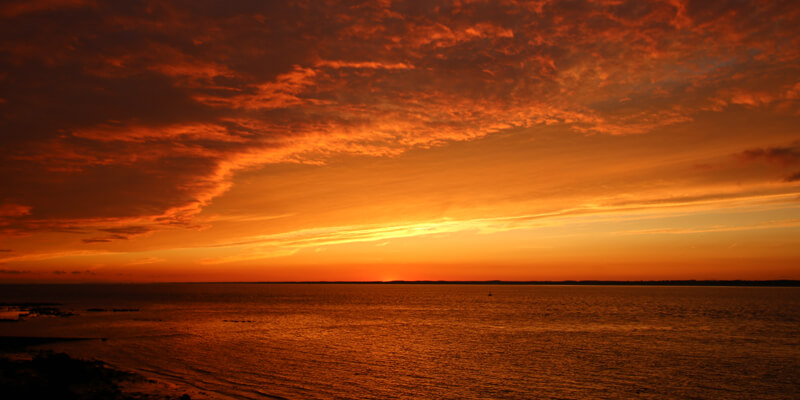
The Red Sea washes the easternmost part of Egypt, the climate is always desert and arid but humid due to the presence of the sea, and the temperatures are more pleasant than those of the desert. Even in this part of Egypt, it never rains, or at most one or two days throughout the winter. The best months for Marsa Alam, Sharm El Sheikh, and Hurghada is September, October, November, December, January, February, March, April, and May.
Seasons in Egypt
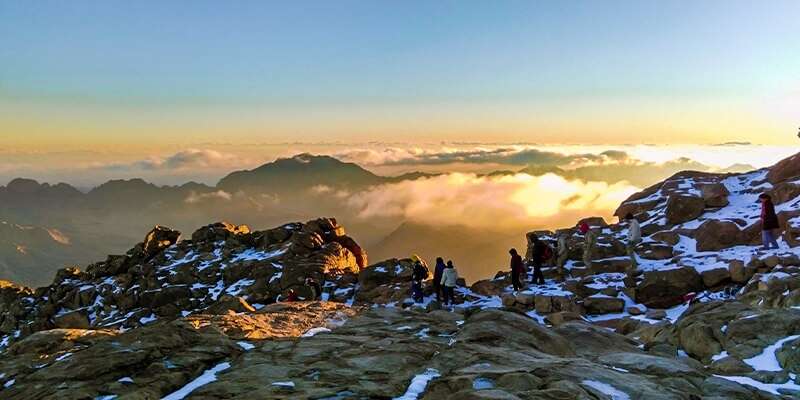
Egypt’s summer and winter are the two seasons most different. People think winter is the time from November to April, and people believe summer lasts from May to October. Because the average temperature in summer in Egypt is so high, you should put on sunscreen with a high UV protection factor more than once a day. During the summer, extreme heat isn’t the only thing to worry about. Sometimes the UVR index goes above 10. When going outside, bring a lot of water to drink. If you wear sunglasses and a hat, you can protect your eyes and head from the sun’s harmful rays.
Even in the middle of winter, the temperature in Hurghada is between 21 and 27 degrees Celsius. Keep in mind that it could get very cool in the evenings. If you are going on a trip in the winter to Egypt, you should bring warmer clothes along with your shorts and T-shirts. Egypt often gets hit by the jamb or sirocco, a hot, dry southerly wind that can reach speeds of up to 87 miles per hour (140 kilometers per hour). These months are March through May (90 mph). Because of the hot, dry wind, the temperature will likely rise quickly by up to 20 degrees C.
Things to know before coming to Egypt:
-
When is the best time to visit Egypt?
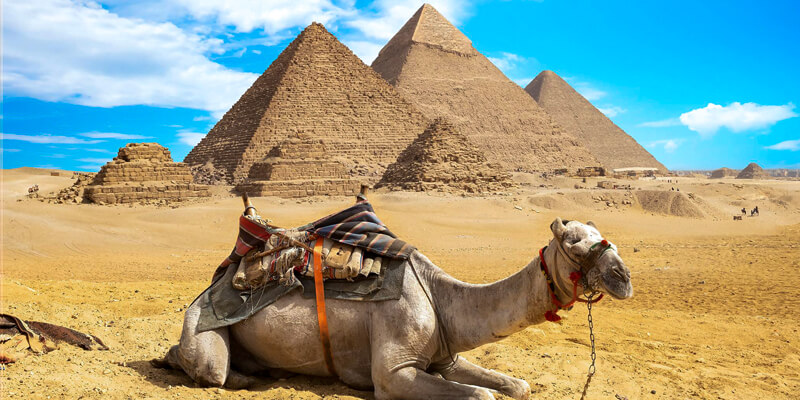
The ideal time to visit the cities is to avoid the sultry heat and the scarce winter rains. The best months to visit Egypt are between March and April and between October and November, perfect for trekking days in the mountains and spending days on the beach on both coasts. And taking advantage of the lower influx of tourists and the not excessive heat. It is preferable instead to visit the desert areas between November and February. Temperatures around 20 ° C allow you to enjoy the desert without too much effort during the excursions. It is essential to consider that in addition to the favorable climate, the beginning of spring and the end of autumn are considered low seasons for Egyptian tourism; therefore the periods with the lowest prices.
To avoid :
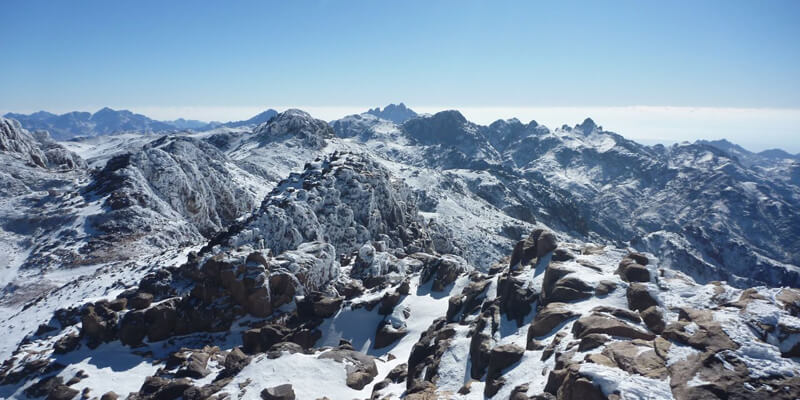
Winter between December and January is to be avoided. If you want to visit the mountains you will find them snowy and icy, the cities are slightly rainy but very humid, and the beaches that have average temperatures of around 18 °C. Summer, particularly the month of August, is to be avoided if you want to travel between desert areas; in general, it is still better to avoid the month of August when temperatures reach their annual maximum.
-
What to bring in your suitcase?

- Summer: light clothing, sandals, swimsuit, sunscreen (we recommend protection 50), mosquito spray, and a hat or bandana to protect you from the sun.
- Winter: it is advisable to wear mixed clothing, half sleeve T-shirts, jeans or long trousers, a sweatshirt or light jacket for the evening, don’t forget your swimsuit, because some areas are still pleasant to enjoy a winter swim.
-
Best time to go to Egypt Nile cruise
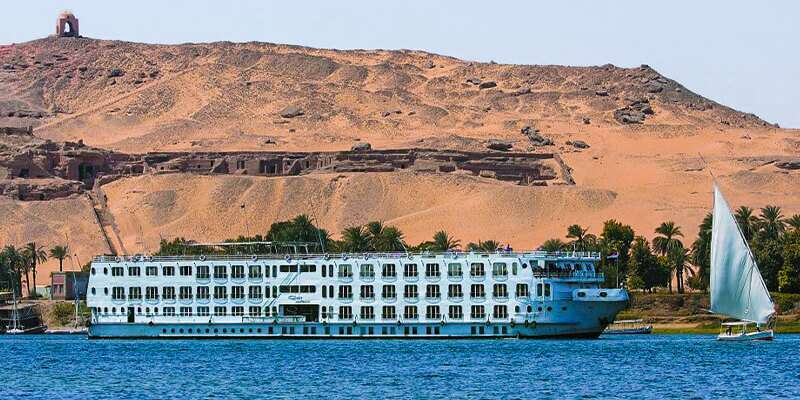
The best time for Nile river tours is between October and April. Because the weather is mild during these times, day trips to well-known places like Luxor and Aswan can be enjoyed to their fullest.
-
Egypt’s popular festivals
Ramadan in Egypt :
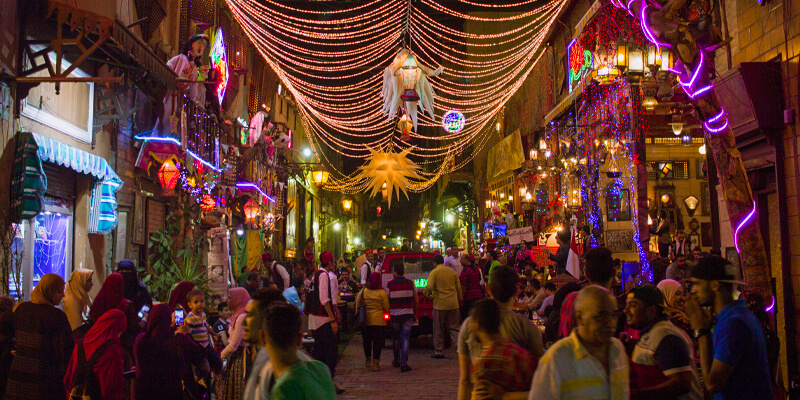
Egypt mostly observes Ramadan. The occasion marks Muhammad’s first Koran revelation. During Ramadan, most Muslims avoid food, drink, sex, and cigarettes. Sadness pervades Ramadan. Muslims abstain from and value tradition. Restaurants and stores close during fasting and reopen after dusk. Tourist office hours may alter so employees can fast at home—benefits of Ramadan travel. Fasting is beneficial. After dusk, people party and eat. Dusk walks may result in dinner invitations. Non-Muslims shouldn’t fast, but they should know most do. Respectful fasting means no public smoking or eating.
Eid al-Fitr:
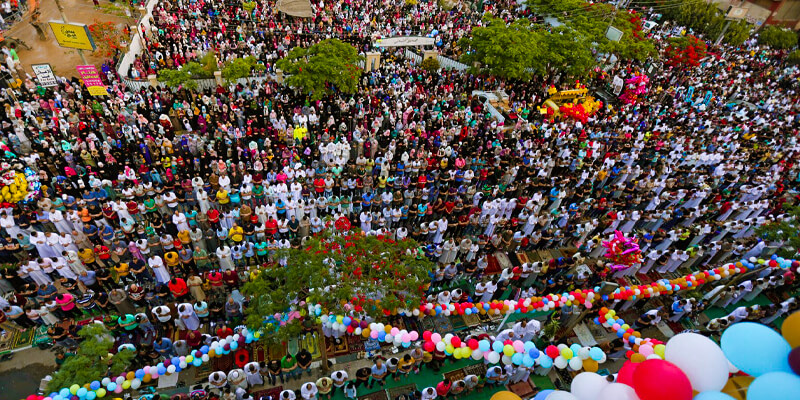
Ramadan is the holy month of fasting in the Islamic calendar, and this event marks the end of Ramadan. On Eid al-Fitr, people celebrating each day of the holiday say prayers in the morning.
After a tasty breakfast, the group will split up into smaller groups and travel to the homes of friends and family members, where they will be served regional specialties cooked by their hosts. As a fun twist, the adults participate in the gift exchange while wearing all white like the kids.
Eid al-Adha:
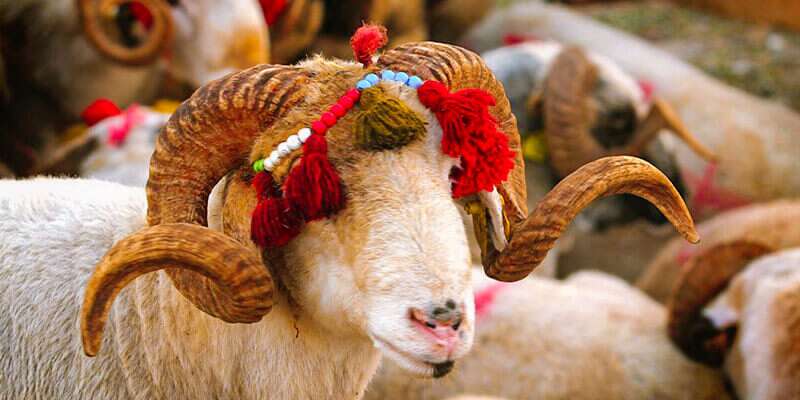
The story says that Abraham was about to kill his son when Allah stopped him and had a lamb killed instead. This holy day also goes by the names of the Feast of the Lamb and the Sacrifice, to name a few.
During this time, many Muslims make the trip to Mecca, which is called the pilgrimage. But even Muslims who stay in their hometowns to celebrate the holiday give the meat of a lamb that has been sacrificed to people in need and their families and friends.
Prophet’s Day:

In Islam, a holiday is held to remember Muhammad’s birthday. Muhammad was a prophet of Allah, and those who follow him celebrate his life and work. Compared to their Arab neighbors, it seems like Egyptians put more importance on this holiday than their Arab neighbors do.
As part of the celebration of the prophet, lights have been put up in the mosques of Cairo. Also, poetry booths have been set up all over the city streets, and outdoor markets are selling foods from the area.
Christmas in Egypt:

Coptic Christmas takes place on January 7. In recent years the decorations for the Western Christmas celebration are coming to Egypt. Now you can see more Santa Claus hats and Christmas lights. And Christmas trees, which were not so common in Egypt at this time of year.
Easter in Egypt:
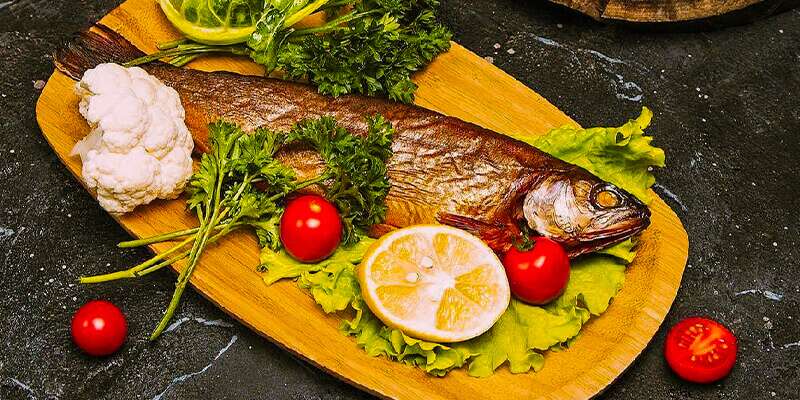
Coptic Easter also coincides with a much older feast dating back to Pharaonic origins called Sham al-Nessim. The name means “smell the breeze” and is a celebration of the arrival of spring, which generally occurs in April. The party brings some traditions that may be familiar. In general, Sham al-Nessim celebrated outdoors with families who enjoy green picnics and like to eat specific foods like pickled fish called feseekh and renga. Another feature of the season is making colorful eggs.
Best time of year to visit Egypt
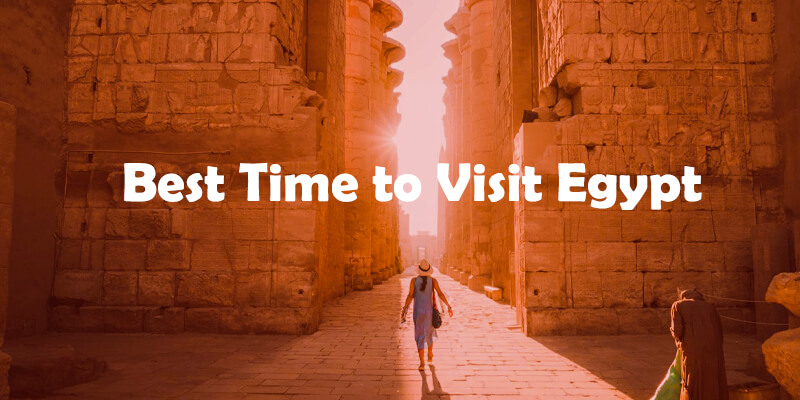
After this brief and general overview of the Egyptian climate, we will give you some suggestions to help you choose the best period for your Egypt travels, specifying that the choice of the period depends on the type of travel you want to make.
For a Holiday on:
- Northern Egypt: the ideal seasons are spring and autumn, periods during which the heat is not yet intense.
- South-Central Egypt: from November to February, warm but acceptable temperatures.
- Eastern Egypt: spring months, during which temperatures are not yet too high.
For good planning your trip to Egypt in 2022, it is good to know the festivities and events that take place in the country, since some national holidays may affect the opening hours of some companies and tourist attractions.
Note: If you planning your trip to Egypt, don’t miss checking our Egypt vacation packages to choose your favorite travel package.

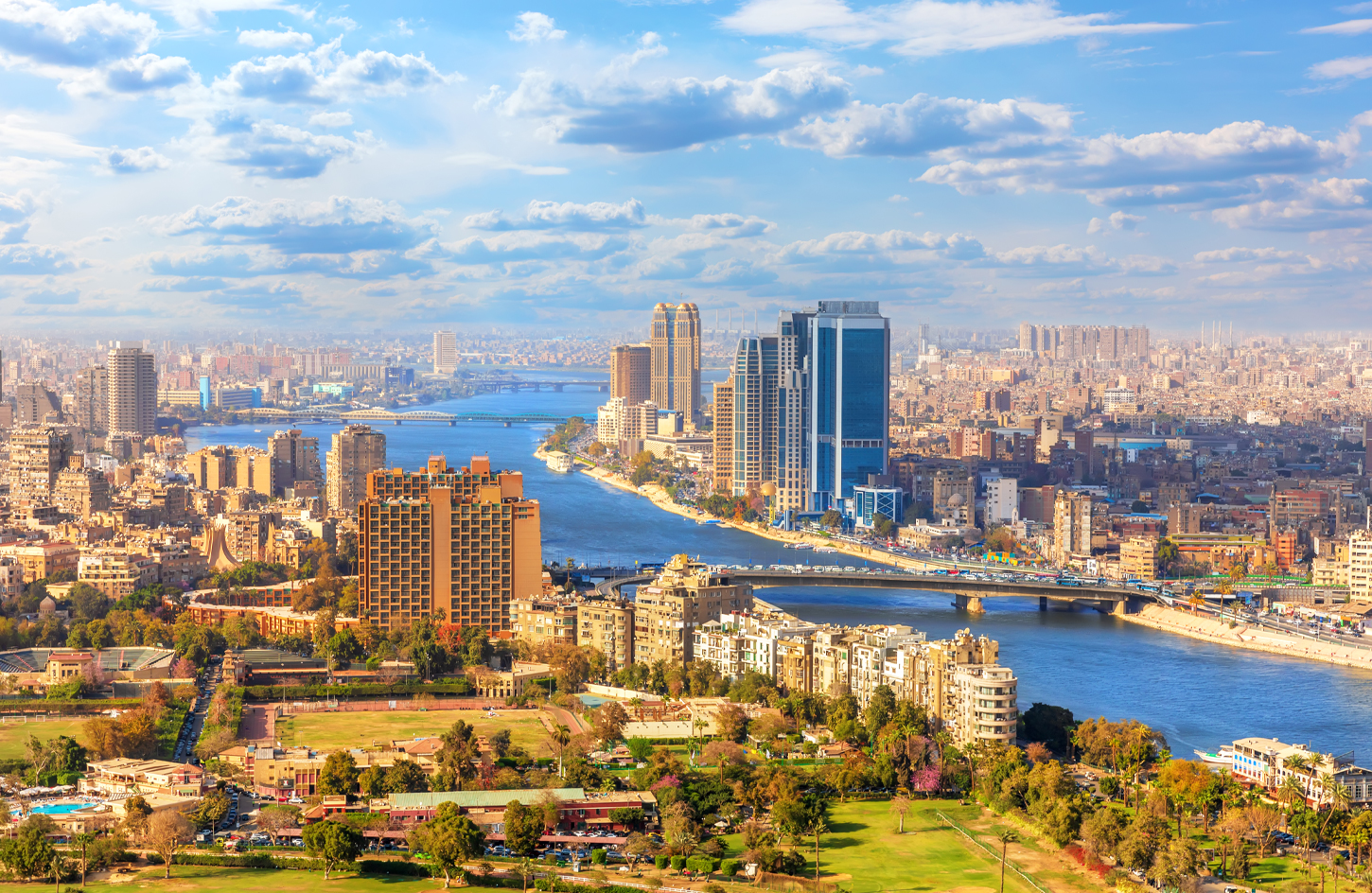

0 Comment